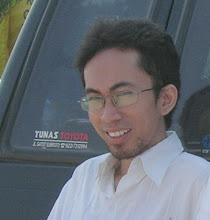The temple is listed on the UNESCO World Heritage site was once a member of the seven wonders of the world. Standing in Magelang, Central Java, Borobudur is one of the largest Buddhist temple in the world. The uniqueness of the temple which was built by King Samaratungga is not only located in the building structure, which consists of ten levels, but also on the terrain, which contains the meaning of life on Earth. Judicial assistance, which will be read sequentially, if we're going in a clockwise direction. In the reliefs of Borobudur, talks about the legendary history of Ramayana, in addition to the description of the status of the society of the time, reflecting the General facilitation of Buddha's teachings. Therefore, this temple features education environment for those who want to learn Buddhism. Another thing that is amazing Borobudur is built using only the system lock that is mounted to Lego blocks without cement.
With an area of approximately 22 hectares or the equivalent of 36 football fields wide, this castle is the largest in the world. Inauguration of notes made by the Indonesian Record Museum (MURI). Competitors, Malbork Castle in Poland with an area of 15 hectares. Benteng Keraton Wolio architecture resembles the letter in the alphabet Arabic dhal. The length of almost 3 kilometers with an average wall height of four meters. Wall thickness between 1.5 - 2 meters. Deliberately made thick walls to withstand cannons attack the enemy.
Inside the fort there are 12 gates, which symbolize the 12 holes on the human body. The human body actually only has ten holes (including navel), but apparently the local community also includes the pores of the skin, and urinary tract distinguish holes and sperm. Located in Bau-Bau, Southeast Sulawesi, Fort Palace is a heritage of the Sultanate of Buton Wolio built in the 16th century by Sutan Buton III, La Sangaji. The depth of the Great Mosque stands at the Palace (Masigi Ogena) built by Sultan Buton XIX, Sakiuddin Durul Alam in early 17th century.
A manuscript containing the epic myth of the creation of civilization Bugis, written between 13 to 15 century. Written versions of the story from the beginning is stored in the 19th century, where previous versions have been lost due to insects and weather. Consequently there is no version of I La Galigo complete. Many sources mention that the script I La Galigo consists of 113 separate manuscripts that reached 31,500 pages, so the longest literary work created, beat the Mahabharata or Ramayana. This saga began to be widely known to international audiences in the theater after adaptation I La Galigo by Robert Wilson, director of American origin.










0 comments:
Post a Comment